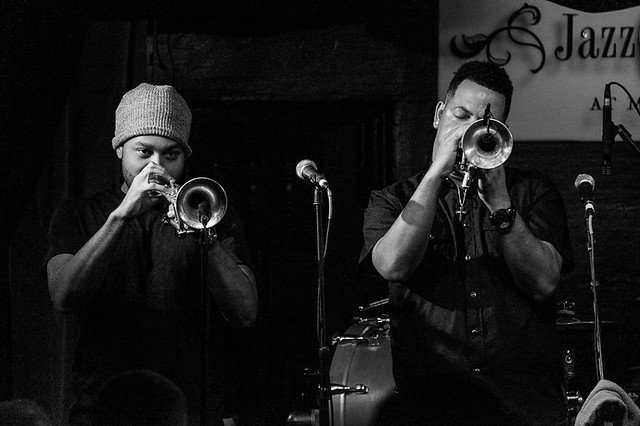Kwesi
Well-known
You chose a great time of day for your shoot! Both images are very inviting.
Dez. wrote: "I would post a link to my personal blog here, but apparently that's not allowed.
"Rule No. 5 - No Self-Promotion
5) Members will not post any messages anywhere on this site that are primarily for the promotion or advertising of any website, forums, email address, business, MLM, activity, or other entities that you have an affiliation with (ie. no self-promotion). Additionally Self-Promotion links will no longer be allowed in your signature." "
Man, I would hope the spirit of that rule is against self-promotion for commercial purposes. Any RFF authorities want to chime in?
I find the M9/M-E is perfectly fine at higher ISO levels, so long as you expose correctly. It you're sloppy with your exposure, or rely on auto settings, it can bite you but otherwise it works well....
...Anyways, here's an example from my M9 shot at ISO 1250, with fairly heavy-handed sharpening making the grain stand out even more. This is with the default color noise setting of "25".
[/IMG]


Totally agree on exposing correctly and knowing the gear. However, the photo included is a well illuminated photo at f2, 1/90th, ISO1250.
Again, I am not saying anything bad about the M9/ME. And high ISO performance does not make a camera better on it's own.
But IMO, the M240 is a more versatile camera because of it's ISO performance, live view, and battery life.
I definitely notice that the M240 is quite usable at even the highest ISO settings. I don't have experience with the M8 or M9 so I cannot opine on them from first hand experience. But didn't you have the M8 and M9 before you got your M240?
aka why I do not want an M240.
I was in the Leica Store LA, and sampled the M240, alongside my M-E and took a couple of snaps with each using a Summicron Asph 35 lens.
Shot at f2.0, metered on auto pointed at the floor in order to get the highlighted look that I use in my work. I then imported them to LR, and made them look as close to each other as possible. All I did was make sure the white balance was the same (3400, +16), increased the shadow brightness to match and decreased the highlight slider to -100.
And here is the big surprise. I was able to recover far more information in the highlights with the M-E than the M240. I did notice that while the skin tones were the same, the cabinets were slightly blue in the M-E shot, while more neutral in the M240 shot. Maybe I could have played with the colour sliders to adjust that, but I wanted to do as little to these images as possible while still getting a result that I would consider satisfactory for a comparison.
I asked a couple of people to judge which photo they preferred without telling them what camera took what picture and all of them picked the M-E image.
Yes, the M240 has a deeper ISO range, but for the majority of my shooting that is not needed. Yes the M240 has a nicer screen, video and quieter shutter. But that matters not one bit for the final image.
Note. All this is purely subjective. If you prefer the M240 image, great. But for me, I do not.


M-E image is on top. Excuse the lousy photo bucket compression of the images.
.... but then I was never all that fascinated by preserving memories of sweaty people singing off key in dimly lit bars.



I have to completely agree with what you've said here. It seems whenever any camera is mentioned the first response is what is it's high ISO capability. Yet no concern whatsoever about how the camera actually handles in the field, etc. My biggest wish is that my M-E's base ISO was 64 or even 25 vice wanting 1600 or 3200 ISO!
....speaking of sweaty people singing off key...
I shoot a lot of stuff in dim interiors, including live music venues. I would just like to say that in most cases, the solution is not higher ISO, but correct usage of flash. Yes, sometimes that's not allowed or possible, but that usually results in better photos than just cranking up the ISO, at least in my experience.
So your solution is what - be the xxxx and try to get away with it?
I shoot a lot of stuff in dim interiors, including live music venues. I would just like to say that in most cases, the solution is not higher ISO, but correct usage of flash. Yes, sometimes that's not allowed or possible, but that usually results in better photos than just cranking up the ISO, at least in my experience.
I'm sure the M-E offers the better looking image...
Exactly. I would go as far as to say that blown highlights are ALWAYS operator error.Not really. Get exposure wrong and you can blow highlights with any camera. 🙂

